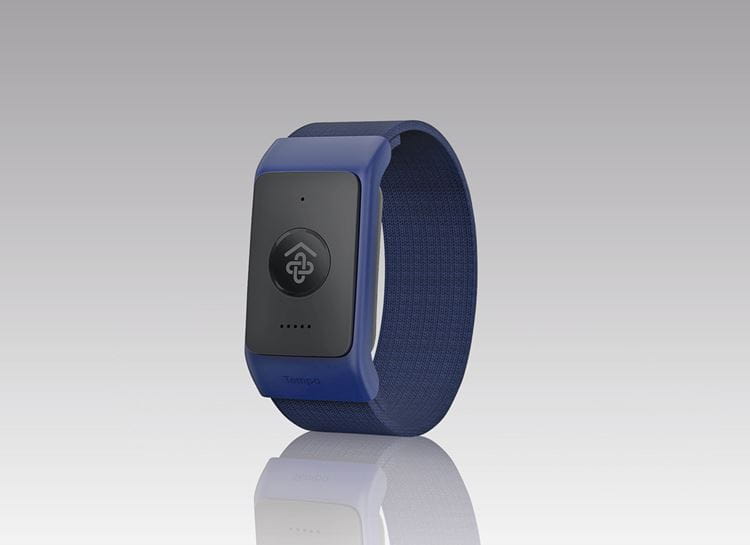Wearables
Let us help you build a wearable that will stand out in the health and fitness market


Tempo employs a rechargeable Li-Poly battery that provides between three and seven days operation between recharge, thanks in part to the ultra low power characteristics of the Nordic SoC. The nRF52832 SoC has also been engineered to minimize power consumption with features such as the 2.4GHz radio’s 5.5mA peak RX/TX currents and a fully-automatic power management system that reduces power consumption by up to 80 percent compared with Nordic’s nRF51 Series SoCs.
“The only reason an elderly person need remove the device is to recharge the battery, and we wanted this to be as infrequent as possible,” says Satish Movva, Founder and CEO, CarePredict Inc. “Battery life is immensely important and the Nordic SoC met the goal of ultra low power consumption brilliantly.”
Nordic’s nRF52832 Bluetooth LE SoC, a member of Nordic’s sixth generation of ultra low power (ULP) wireless connectivity solutions, combines a 64MHz, 32-bit ARM® Cortex® M4F processor with a 2.4GHz multiprotocol radio (supporting Bluetooth 5, ANT™, and proprietary 2.4GHz RF software) featuring -96dB RX sensitivity, with 512kB Flash memory and 64kB RAM. When launched, the SoC was the world’s highest performance single-chip Bluetooth LE solution, delivering up to 60 percent more generic processing power, offering 10 times the Floating Point performance and twice the DSP performance compared to competing solutions. Floating Point and DSP performance are key requirements for advanced wearables.
The SoC is supplied with Nordic’s S132 SoftDevice, a Bluetooth 4.2 qualified RF software protocol stack for building advanced Bluetooth LE applications. The S132 SoftDevice Central, Peripheral, Broadcaster and Observer Bluetooth LE roles, supports up to twenty connections, and enables concurrent role operation.
“When we started, we didn’t know whether we would use Bluetooth LE, ANT+, or a proprietary data protocol, but the nRF52382 SoC allowed us the luxury of doing anything we wanted at the software level without having to change the hardware. Today we use Nordic’s 2.4GHz proprietary wireless connectivity, but tomorrow we have the option to move to Bluetooth 5 or ANT,” continues Movva. “This was the number one reason for selecting the Nordic SoC. The WL-CSP compact size, low power consumption, large RAM and Flash memory, and the processing power were also major reasons for selecting the Nordic product.
“It was apparent from day one that Nordic is a very different company to its competitors, and the support has been nothing short of superlative,” concluded Movva.
Let us help you build a wearable that will stand out in the health and fitness market